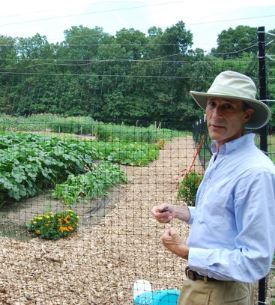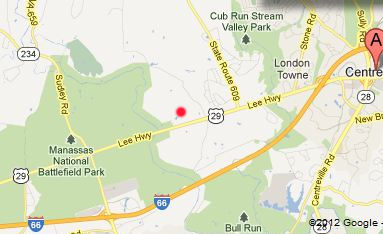The definition of what constitutes a “sustainable” community continues to evolve as entrepreneurs introduce innovations into the marketplace. A fascinating, if potentially flawed, example is Foxmont in western Fairfax County, which is being developed by environmentalist and attorney Jay Zawatsky.
In 300 acres west of Centreville, Zawatsky has plotted 14 five-acre lots for his first community. Each house will have its own water supply, natural septic field, vegetable garden and compressed natural gas outlet so homeowners can run their cars on cheap, clean natural gas.
“It’s not just a green house, but an entire green community,” Zawatsky told Tom Jackman author of the Washington Post‘s The State of NoVa blog. “I didn’t want to do what other developers are doing, throwing up big boxes of air. Those are just more energy hogs. I wanted to do it in a way that had the least possible impact on the environment.”
The development also will support a communal garden, and residents will be able to fish bass in Hunter’s Pond and hunt deer in the woods. The development links to nearby equestrian trails. As a bonus, a bald eagle lives near the pond. With apologies to Hank Williams, Jr.: A suburban boy can survive!
Ironically, wells, septic tanks and family gardens are a throwback to country houses from a past era, before county governments started providing urban-style municipal services. The real innovation, other than in repackaging what once were hard-scrabble necessities as environmental virtues, is extending compressed natural gas (CNG) to the subdivision. CNG sells for the equivalent of $1.20 per gallon right now. “Using CNG to replace gasoline and diesel will reduce fuel costs for NoVa drivers by more than 50 percent for every mile driven,” Zawatsky said. “That is like a giant tax cut for NoVa families.”
Energy-efficient homes will range in size from 4,200 square feet to nearly 8,000 square feet, with four to six bedrooms and four to six bathrooms. They will be priced in the $1 million to $1.3 million range.
Bacon’s bottom line: Pardon my skepticism. The idea of referring to 8,000-square-feet houses, no matter how energy efficient, as “sustainable” seems ludicrous. So does the notion of putting single-family dwellings on five-acre lots, which disrupt far more land and stress congested roads far more than smaller, urban lots in walkable communities. Burning natural gas is unquestionably more environmentally benign than burning gasoline, but erecting housing in a location where homeowners will have to commute long distances is not.
Sustainability hype aside, the Foxmont project still could represent a step forward by integrating household gardens and CNG into real estate development. Will the current mania for locally grown foods translate into a demand for home-grown foods? Will people pay a premium for access to CNG? Are there enough people eager to live in western Fairfax County willing and able to pay more than $1 million for such amenities? Those are questions we cannot possibly know in advance. Only through real-world experiments like Foxmont can we find out.
— JAB




